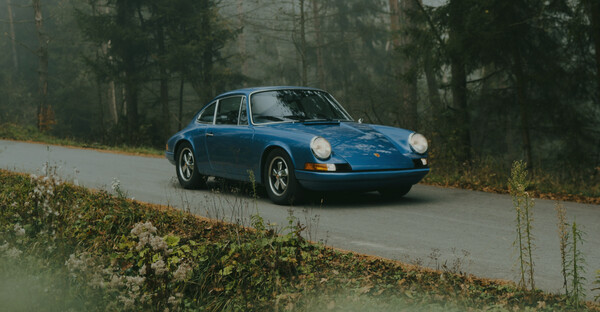Description
Details:
Oldtimer Australia is delighted to offer for sale a 1955 factory right hand drive Volkswagen Type 2 (T1) split screen 23 window De Luxe Microbus, otherwise known as a Samba or Kombi.
The “Zertifikat” on file from Stiftung Automuseum Volkswagen dated 1st September 2011 confirms this is a factory right hand drive model 244 VW De Luxe Microbus. It was built on 11th March 1955 and left the factory on 18th March 1955. It was delivered to Volkswagen dealer Kemsley in London, UK. The certificate also tells us it was delivered with the following options: sealed-beam headlamps (M011), towing hooks front and rear (M029), Westfalia camping equipment (M108) and “Safari” windscreens (M113).
At some stage this Kombi found its way to Australia. It is not known exactly when it was imported, but the Department of Transport has confirmed this must have been prior to 1989.
There are receipts on file from the early 1990’s indicating its then owner initially lived in Seymour, Victoria before moving to Brisbane mid 1990’s. The car was sold in 2001 to its next Brisbane based owner. The current owner, who is also Brisbane based, acquired the car in October 2004. At that time it was painted in green and white. The odometer read 13, 354 miles.
The car was used and enjoyed through until 2010, at which time its owner decided to return his Kombi back to its former glory. He enlisted the services of Das Resto Haus on the Gold Coast for the restoration. The owner wanted to return the car to its original colour scheme of Chestnut Brown (Code: L73) over Sealing Wax Red (Code: L53).
The owner opted to make some upgrades to the Kombi to make it a more usable classic. The engine was replaced with a new 1, 654 cc engine of the correct type. The rear suspension was upgraded to an independent rear suspension setup and the original drum brakes were replaced with disc brakes.
All the body work was completed around June 2012 after which the Kombi was repainted. The interior was retrimmed in correct light brown vinyl. The owner also managed to find the very rare foldable left seat to complete the interior.
There is a thick file of invoices on file documenting most of the work done.
It has now been just over 10 years since this Kombi was restored, however, it has been well cared for and today it still presents very well. From a meter away the paint work looks magnificent, however, when you get closer to the car you will notice some orange peel in the paint. This is mainly below the swage line and most noticeable on the driver’s side of the car. There are no significant stone chips or other imperfections. All the panel gaps are very good.
The external trim is minimalistic, but presents well. The glass (of which there is plenty!) is in good condition and, with the exception of the two front windows, appears to be all original.
The steel wheels are shod with Coker Classic tyres, size 165R15, date stamped 2313 (week 23, 2013). They appear to have hardly been used but probably should be replaced based on age if one would consider doing some serious driving.
A cool detail on these early Kombis are the semaphores. They are operational, however, for safety the current owner has installed additional indicators which are discretely positioned underneath the bumpers front and rear.
Open the door and it immediately becomes obvious that this Kombi has been sparingly used since it was restored. Everything still presents like it would have done 10 years ago and there is hardly any sign of usage. The front seats present well and provide ample support. The back seats present equally well and it appears as if they have never been used. The carpets are in excellent condition. All the instruments in the dashboard present well and appear to be in good working order. There is an aftermarket RetroSound radio fitted.
After getting comfortable behind the steering wheel, we make ourselves familiar with the very basic controls in preparation for our test drive.
The car starts easily even from cold and quickly settles into a smooth idle with that familiar ‘Volkswagen sound’ from its air-cooled engine.
There is something about this car, it is ‘just cool’ and we are genuinely excited to see how it performs on the open road. After allowing the engine to warm up, we move the gear lever to select first gear and off we go. For someone not familiar with a Kombi, the driving position takes a little bit of getting used to as you are basically sitting on top of the front wheels! As a result, driving around a corner feels a little bit weird initially. You get the feeling you are turning too late to make the corner, yet you do so easily.
This Kombi just wants to go! The engine revs freely and there is enough power on tap to easily keep up with modern day traffic. The gearbox is smooth both up and down the box. The upgraded brakes stop the car quickly and in a straight line when required. With the 23 windows it is needless to say the visibility is good all around. It also makes the Kombi feel spacious and bigger than it actually is.
Today the odometer reads 65, 631 miles.
In recent years these Volkswagen Type 2 (T1) split screen 23 window De Luxe Microbus’ (otherwise known as Sambas or Kombis) have become highly collectable. These early cars are extremely rare and the ones to have, particularly in right hand drive.
This particular example ticks a lot of boxes and can be used and enjoyed as is or taken to the next level by rectifying the paint issues.
This Kombi would be a perfect beach house car and would turn plenty of heads at any cars and coffee!
The Volkswagen club scene is very active in Australia and this Kombi would definitely be a welcome sight at any of their events
Highlights:
- Factory right hand drive early 23 window Microbus
- Original colour combination
- Sympathetically upgraded
- Ready to use and enjoy or take it up to the next level.
Price AUD $209, 950
Background:
In the early 1930s cars were a luxury. Most Germans could afford nothing more elaborate than a motorcycle. Only one German out of 50 owned a car. Seeking a potential new market, some car makers began independent “people’s car” projects, such as the Mercedes 170H, Adler Autobahn, Steyr 55, and Hanomag 1. 3L.
The trend was not new. Béla Barényi, an Austro-Hungarian engineer is credited with having conceived the first basic design in the mid-1920s. In Germany, Hanomag produced the 2/ 10PS “Kommisbrot” a small, cheap, rear-engined car from 1925 – 1928 and Czechoslovakia produced the popular Tatra 7. Ferdinand Porsche had been trying for years to get a manufacturer interested in a small car suitable for a family. He built a car named the “Volksauto” from the ground up in 1933, using many popular ideas and several of his own. Key features of the car were an air-cooled rear engine, torsion bar suspension, and a “beetle” shape with the front hood rounded for better aerodynamics (necessary as it had a small engine).
In 1934 Adolf Hitler became involved. He ordered the production of a basic vehicle that needed to be able to transport 2 adults and 3 children at 100km/ h. He wanted all Germans to have access to a car. The “people’s car” would be available at 990 Reichsmark. A special savings plan was introduced. A person could save 5 Reichsmark a week to realise their dream of owning their own car. Over 300, 000 people participated in this savings plan, however, the whole project was financially unsound. No private industry was able to meet the requirements and produce a car that could be sold for 990 Reichsmark.
On the 28th May 1937 the “Gesellschaft zur Vorbereitung des Deutschen Volkswagens GmbH“ (Company for the Preparation of the German Volkswagen Ltd) was formally established by the German Labour Front and in 1938 the first prototypes of the “KdF-Wagen” (Kraft durch Freude) started to appear. On 16th September 1938 the company was renamed Volkswagenwerk GmbH and the company built its main plant in KdF-Stadt which later became Wolfsburg.
The outbreak of the Second World War and integration into the arms industry prevented mass production of the Volkswagen “people’s car”. Instead, military vehicles and other armaments were produced using forced labour.
In April 1945, KdF-Stadt and its heavily bombed factory were captured by the Americans, and subsequently handed over to the British, within whose occupation zone the town and factory fell. The factories were placed under the control of Saddleworth born British Army officer Major Ivan Hirst, by then a civilian Military Governor with the occupying forces.
One of the factory’s wartime “KdF-Wagen” cars had been taken to the factory for repairs and abandoned there. Hirst had it repainted green and demonstrated it to British Army headquarters. Short of light transport, in September 1945, the British Army was persuaded to place a vital order for 20, 000 cars. The rest as they say is history. The Volkswagen or VW Beetle was born.
In 1946 Dutch Volkswagen importer Ben Pon visited the Volkswagen factory in Wolfsburg with the intention to purchase Beetles for import into the Netherlands. During this visit he saw an improvised vehicle based on the Beetle chassis being used to transport materials around the factory, a Plattenwagen. That made him think and he came up with a sketch of what became the Type 2 Volkswagen. That sketch, dated 23 April 1947, can today be found in the Rijksmuseum in Amsterdam. Volkswagen liked the idea, however; the Volkswagen factory was at capacity producing Beetles. Eventually, the Type 2 was approved for production on 19th May 1949 and the first example rolled off the production line on 12th November 1949. The rest as they say is history. The Volkswagen Bus, otherwise known as Microbus, Transporter, Samba or Kombi depending on the body style and market, became very popular all around the world and is still produced today.















